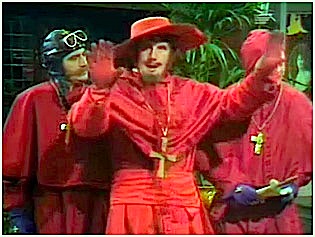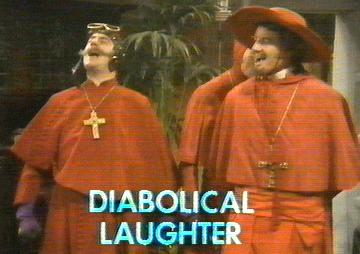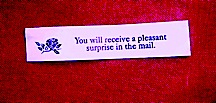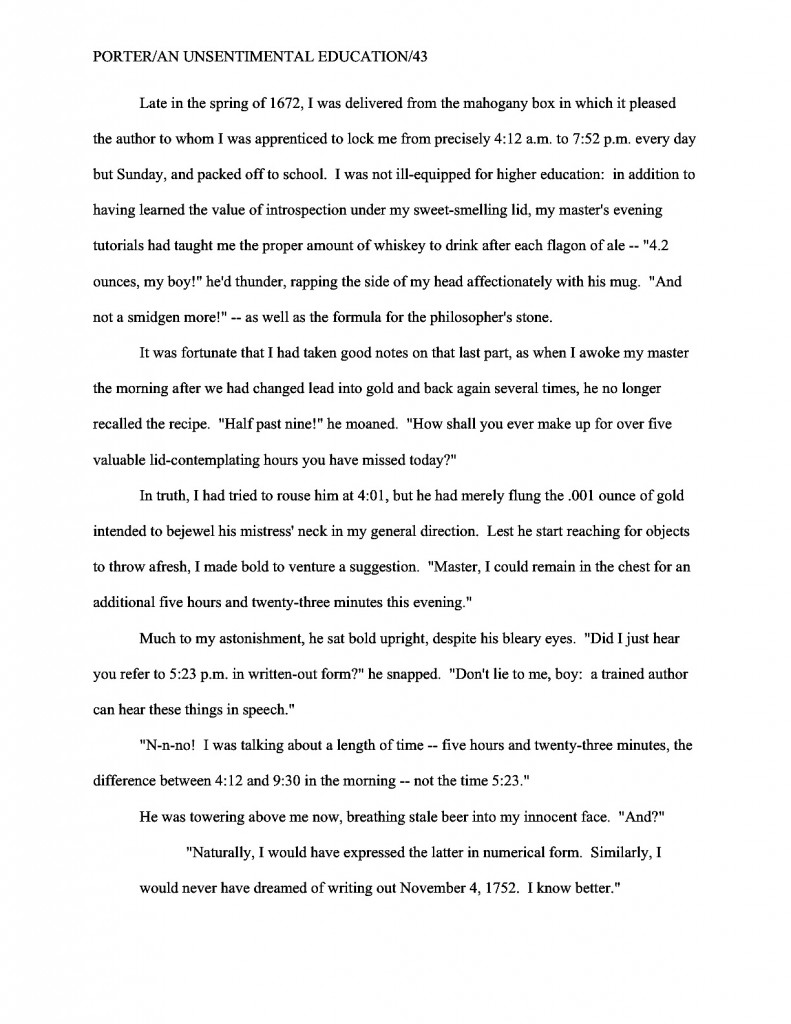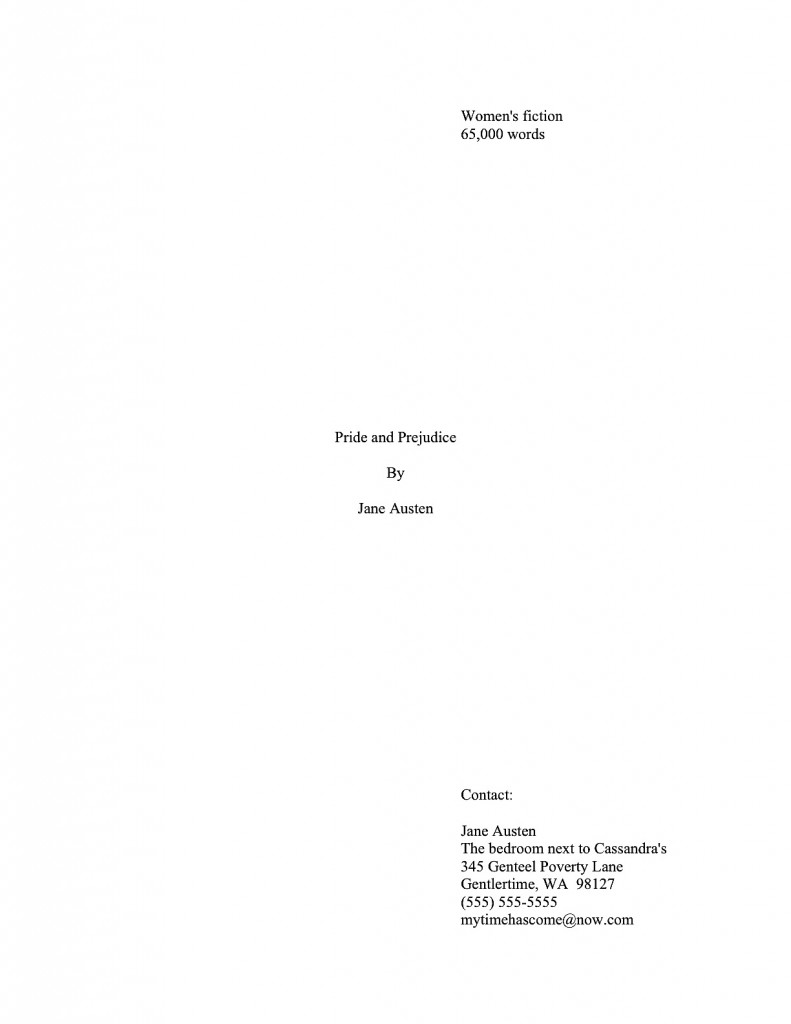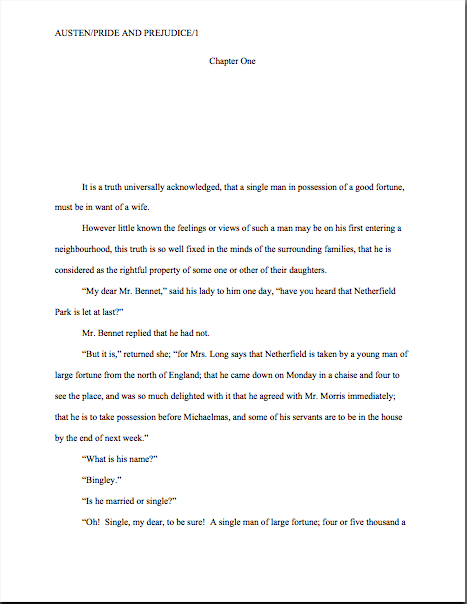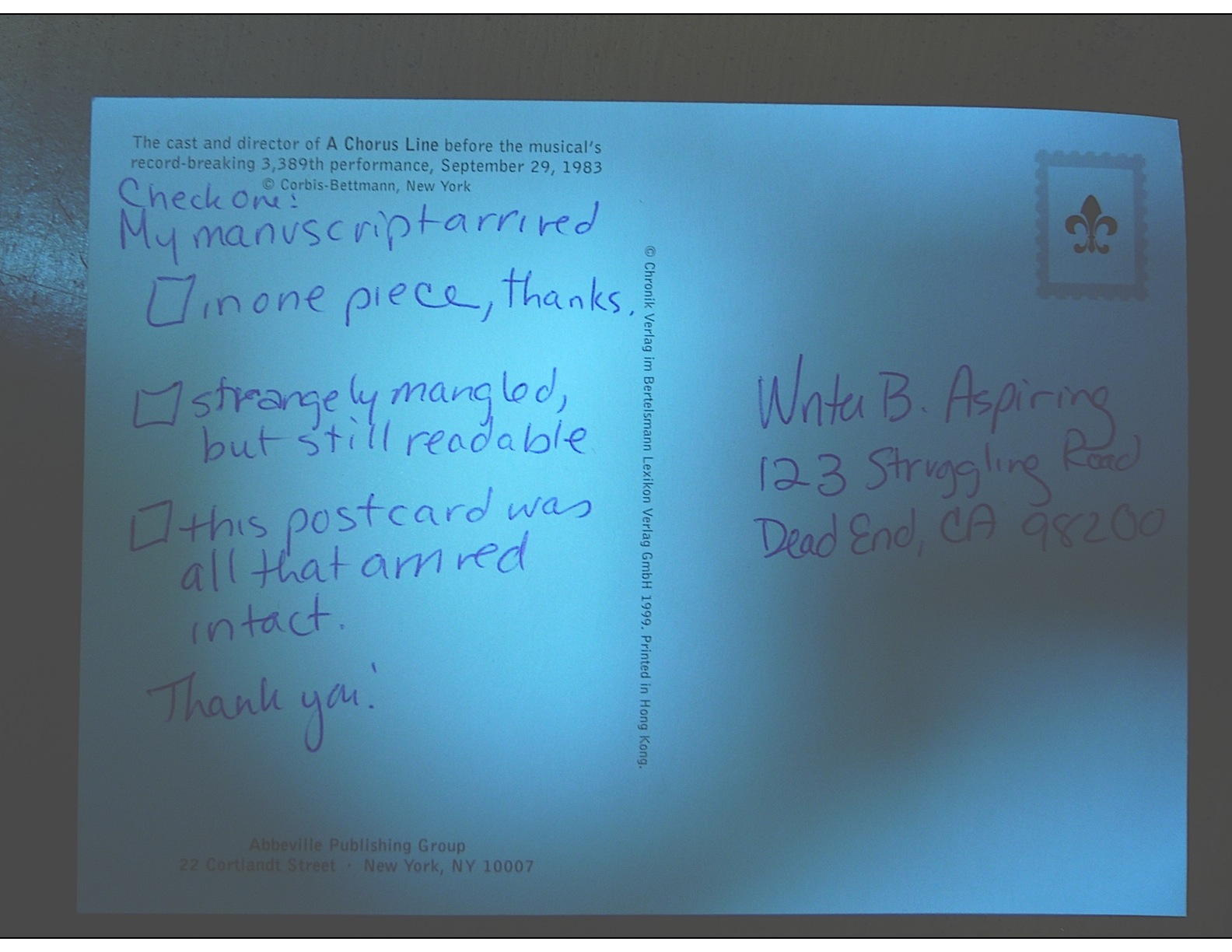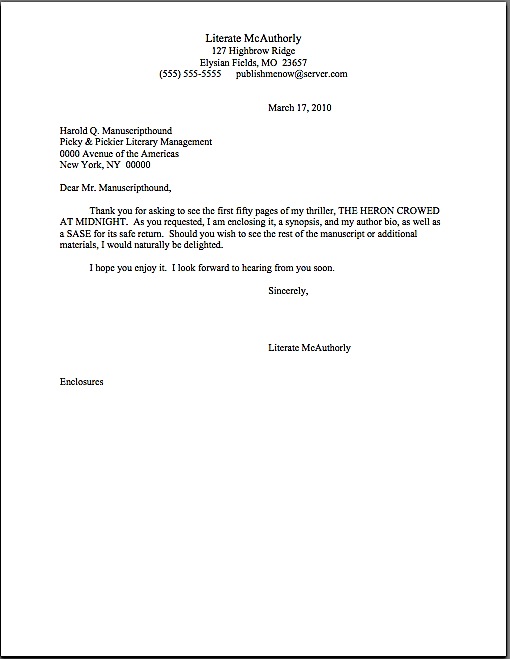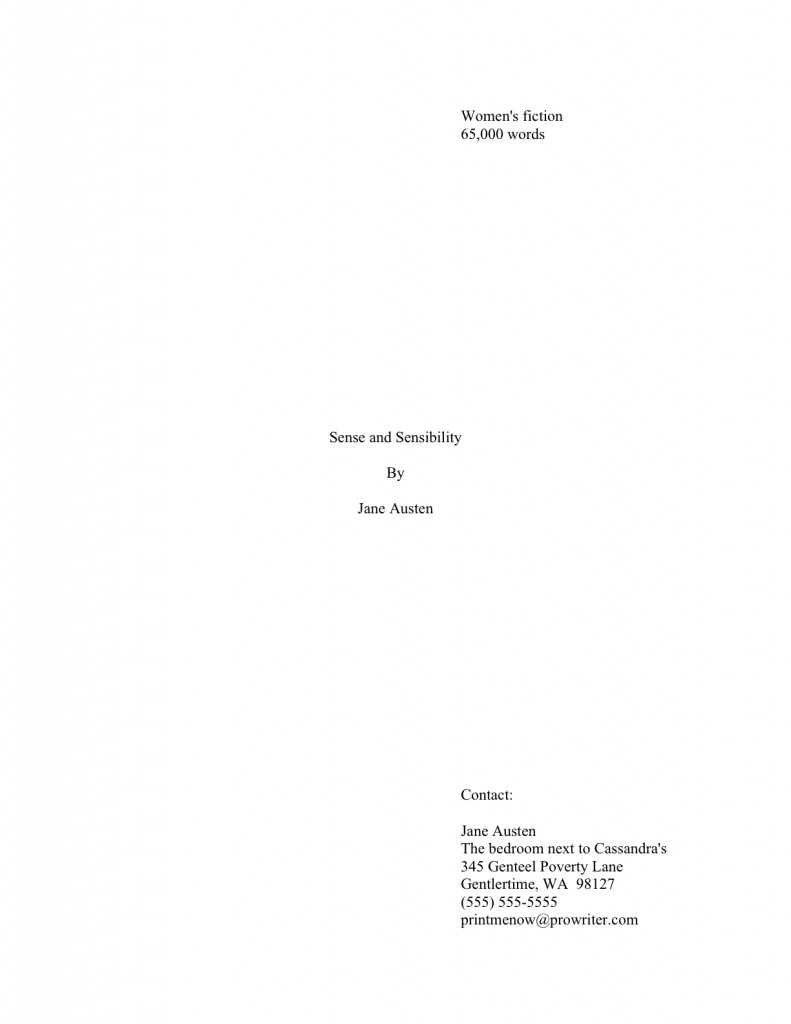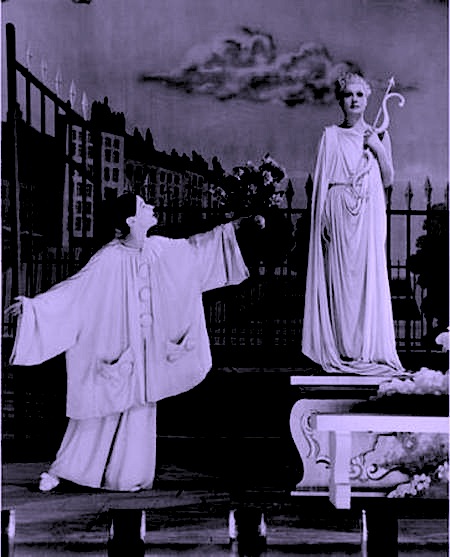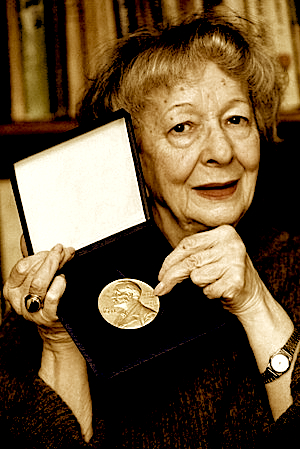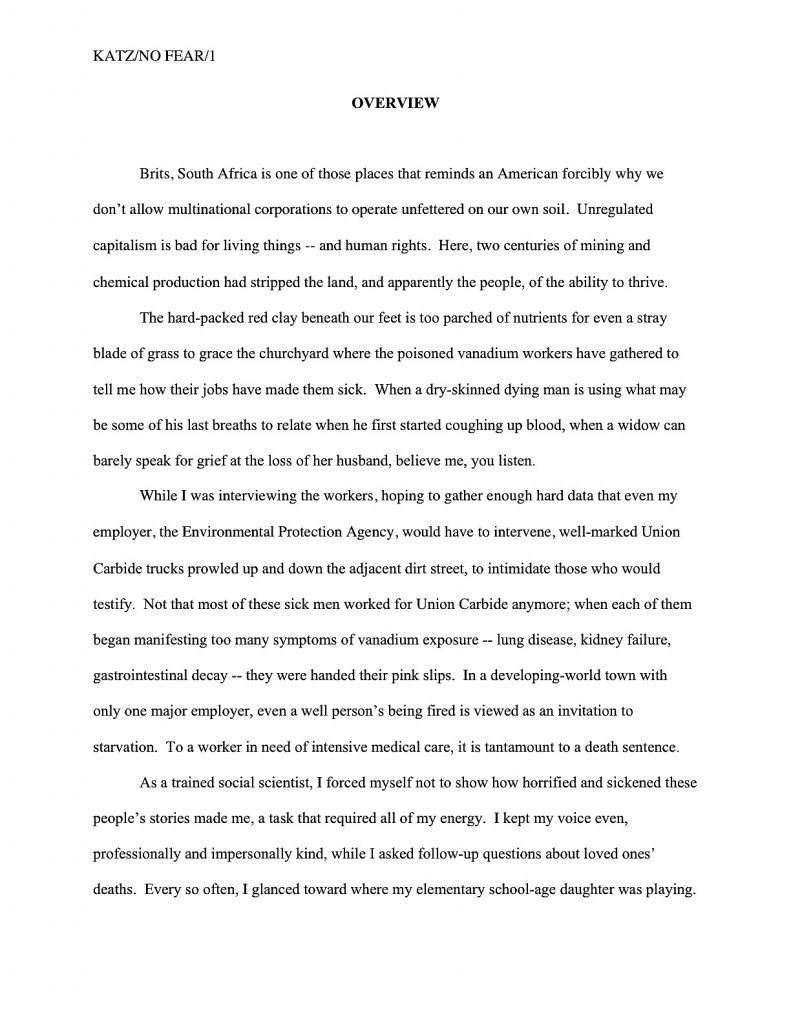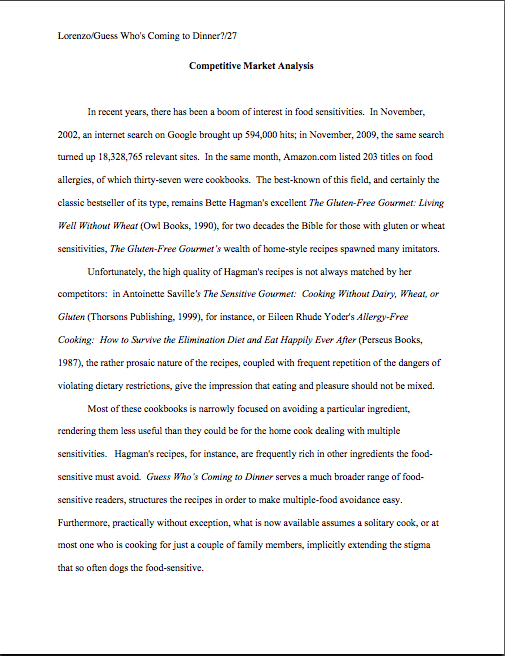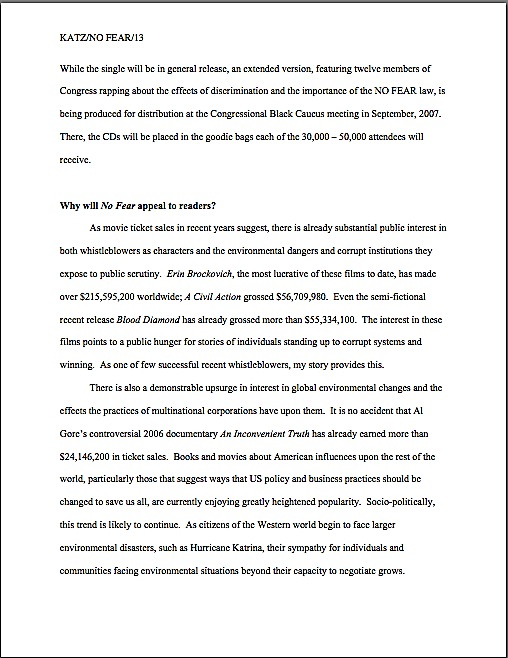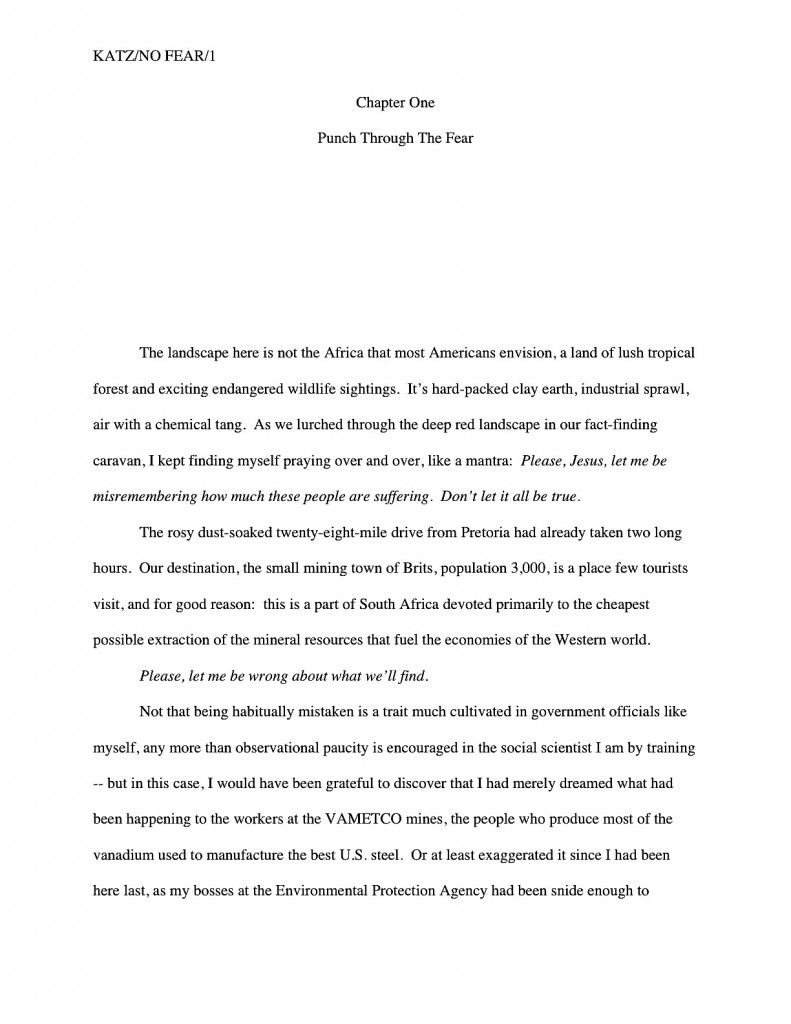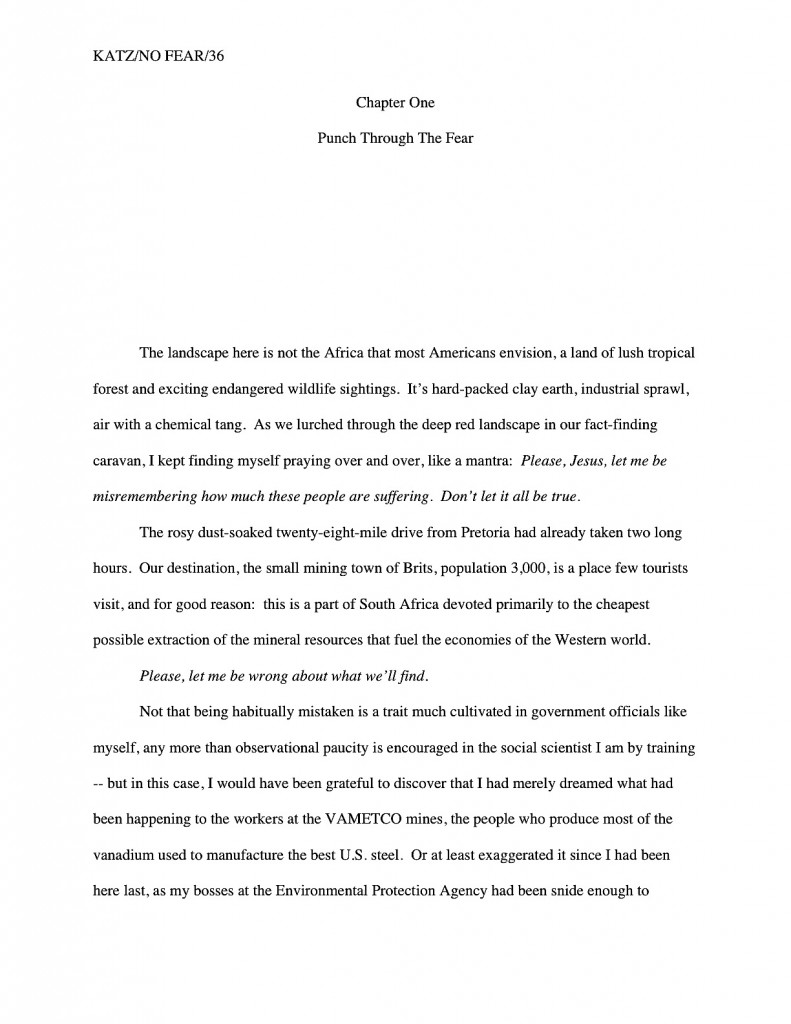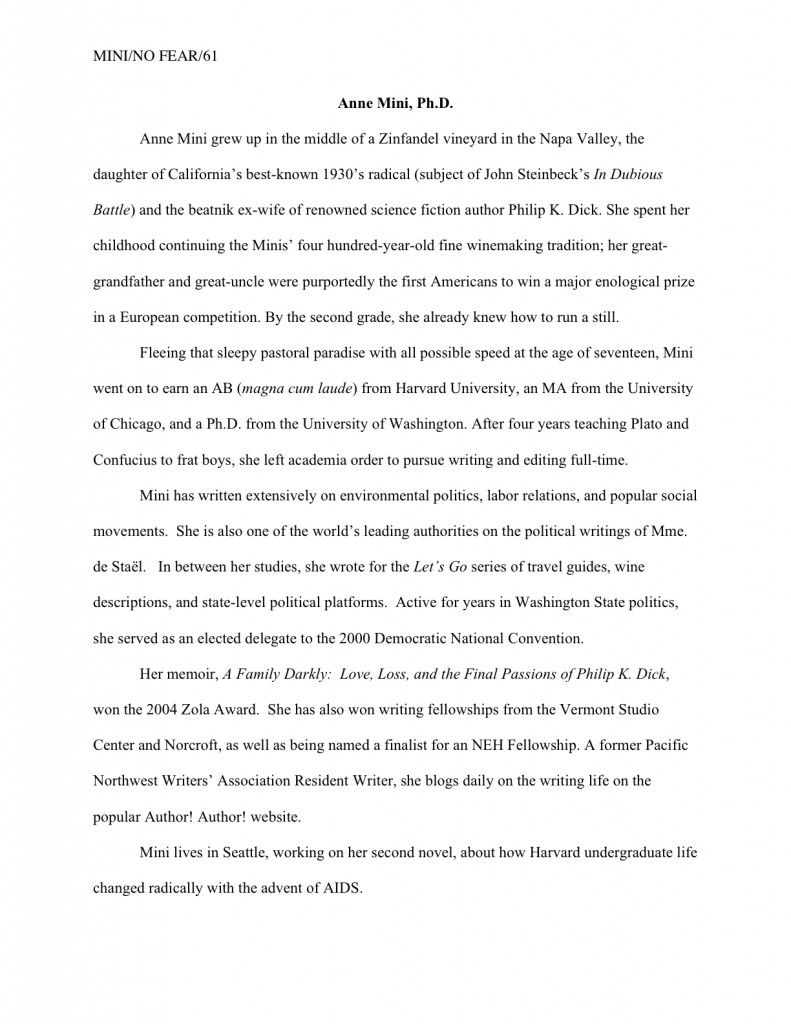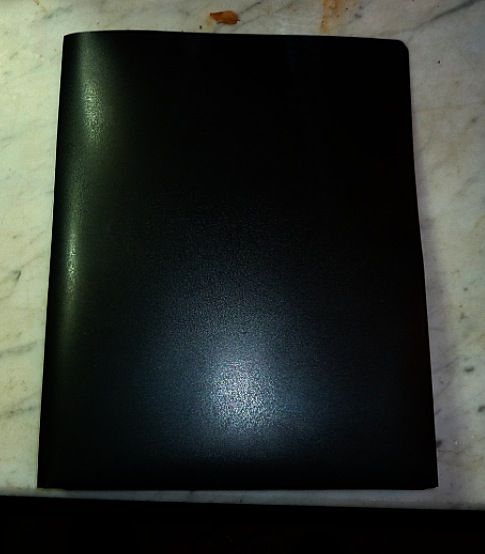
I meant to post yesterday; honestly, I did. Then I got sucked into a conversation that a lot of us affiliated with the publishing industry have found ourselves having over the last year and a half: a debate about the presumed imminent demise of traditional publishing with people who frankly wouldn’t be all that sorry to see it go.
Specifically, in this case, with people who did not grow up cherishing the hope that sometime, someday, if they worked really, really hard at their craft, they might actually get PAID for their writing. (Hey, my SO has friends, too.) To the gleeful consumers of e-books who invaded my living room last night, the question of how — or even whether — the author of the story they’re enjoying so much will be remunerated was simply not all that interesting. They were too busy licking their chops at a vision of a world where they would never have to pay $25.00 for a hardcover again.
How could I tell that they weren’t particularly sympathetic to the authors’ plight? Well, let me put it this way: if I had one piece of bread for every time one of my guests airily voiced some dismissive iteration of, “Oh, the really good books will make money for their authors” (presumably through some magical process overseen by the Tooth Fairy’s older and more organizationally-minded sister), I’d make a peanut butter-and-jelly sandwich for every writer I know. And I go to a lot of writers’ conferences.
To those of us who’ve been listening to the blithe declaration, “Oh, good writing will always find a home at an agency or publishing house!” for any length of time, this argument is eerily familiar, isn’t it? Most people’s faith in the inevitable discovery of every single talented writer who has ever lived borders on the intensity of a five-year-old’s confidence that Santa Claus is coming down that chimney to deliver presents, not to filch goodies from under the tree.
The possibility of disappointment just doesn’t occur to them.
The inevitability argument always makes me cringe, because its flip side is so harmful to aspiring writers. It runs a little something like this: if every good manuscript will necessarily be snapped up by the publishing industry (or an admiring web-browsing public, in my guests’ worldview), then by logical extension, if a writer’s having trouble getting a book published or finding an agent, the book couldn’t possibly be good.
It’s just not true. But writers hear this theory so often from the lips of non-writers — and even from other writers — that they can come to believe that if they were really talented, they wouldn’t have to struggle at all. So why keep pressing forward, if the Tooth Fairy’s older sister has already passed judgment on their books and found them wanting?
But try explaining that to a roomful of non-writers. Suffice it to say that after an hour and a half, I thought it might not be the world’s best idea to inflict my mood upon all of you, dear readers.
I’m more chipper tonight, though. Let’s get back to work.
Last time, I suggested — and none too gently — that while a writer is reading through his manuscript (preferably IN ITS ENTIRETY, IN HARD COPY, and OUT LOUD) with an eye toward making his protagonist more active, it might behoove him to consider revising scenes where secondary characters are either passive or mirror the protagonist’s reactions. Not to mention looking to vary those characters’ reactions, so they do not become too predictable.
I’m bringing it up again, because most writers’ instinct is to cultivate reaction repetition, not to minimize it. All too often, writers proceed on the assumption that consistency is the way to make a character believable. The result? Generally speaking, the less complex the character, the more predictable he will become over the course of a book, because the writer keeps showing the reader the same reactions over and over again.
Why is this so common? Authorial fear, mostly, I suspect: fearing that readers may not recall important plot points or characteristics, many aspiring writers repeat such information throughout the book.
How common is this practice? Well, let’s just say that most of us who read for a living see the first repetition of a trait or plot point and say immediately, “Oh, okay — THAT little tidbit is going to be crucial to the climax.”
I like to call those tidbits plot flares, significant repetitions and emphatic little asides that the writer inserts early in the story so that the eventual plot twists won’t come entirely out of the blue. In your English classes, the teacher probably called it foreshadowing.
Plot flares can be a huge problem in a submission or contest entry, far more than most eager foreshadowers suspect. Millicent the agency screener is a pretty savvy reader, after all; like her aunt, Mehitabel the veteran contest judge, she’s trained to pick up on foreshadowing. And when someone whose hint-discovery skills have been honed on page after page of similarly-themed manuscripts for years on end — as is almost invariably the case for an experienced agency screener or contest judge, since both agents and contests tend to specialize in certain book categories — encounters a less-than-subtle hint of what’s to come, she’s likely to draw conclusions about the rest of the book.
Which is not necessarily a drawback, if those conclusions are favorable. But if those conclusions include a sense that she’s read a similar foreshadowed twist recently, or that now that she knows what’s to come, she’s less inclined to keep turning those pages, we all know what her next decision is likely to be, right? “Next!”
Now, I have nothing against a little light foreshadowing — far from it. As a reader, I find it very satisfying if the villain’s main henchman’s nervous breakdown in Chapter 11 was suggested by a bevy of neuroses introduced with ever-increasing intensity in Chapters 2, 7, and 10, or if the protagonist’s long-lost father, known to the reader as the proprietor of the local haberdashery, evinces the occasional slightly-too-intense burst of emotion when the protagonist purchases a hat. That’s just good story construction.
Foreshadowing can devolve into plot flares when the narrative repeats same reaction, character trait, or even factual statement so that the reader is more likely to notice it. Instead of providing a subtle build-up for what’s to come, plot flares blare it.
Like so many manuscript megaproblems, the over-use of plot flares is a phenomenon familiar to all of us from movies and television shows: the eventual startling plot twist is revealed in some small way within the first twenty minutes. If the heroine is going to have to shoot the villain at the climax as her Own True Love lies bleeding and weapon-free, for instance, she will almost invariably make a statement about her (a) loathing for guns, (b) aversion to violence, and/or (c) having witnessed some incredibly graphic murder during her formative years during the first act.
Ostensibly so we poor viewers can understand why anyone might have an aversion to, say, picking up a gun and shooting someone in cold blood, or some other hard-to-grasp concept like that.
In novels, creative nonfiction, and memoirs, foreshadowing of the denouement often happens within the first 50 pages — or even the first chapter. Heck, it’s not all that uncommon for an actual SCENE from the climax to open the book as a prologue, with the plot jumping backward in time immediately thereafter to figure out how our hero ended up there.
Or, to put it in cinematic terms: “Rosebud.”
From the author’s perspective, these hints may seem quite subtle, mild foreshadowing of events to come. As character development and background, small hints are often advisable, or even unavoidable. If these hints aren’t awfully subtle, though, they can give away the rest of the book, deflating suspense as surely as helium comes out of a balloon when you jab a needle into it.
And to professional readers, who see every plot twist in the book, so to speak, on a literally daily basis, a poorly-done foreshadowing hint glows in the middle of a page like a flare set up around a midnight highway accident: don’t go there.
There are, of course, the classics common to both the silver screen and the printed page. If the female lead faints or mentions putting on weight, she’s going to turn out to be pregnant; if any man announces that he’s counting the days until retirement, he’s going to be killed (and, heaven help us, “Danny Boy” will be played on the soundtrack); if our hero is a sad guy about to be called to action, he will inevitably turn out to have had a beautiful (and often, in the flashback, silent) wife and possibly cherubic child who were slaughtered before his eyes while he watched, helpless.
Pathos, pathos. And at this point in storytelling history, predictability, predictability.
It’s not just lowbrow entertainment that embraces this strategy, either. These cliche’s transcend genre or even writing quality: that last example about the dead wife and child was the backstory for both half the action films Charles Bronson ever made and the Sidney Poitier character in GUESS WHO’S COMING TO DINNER (courtesy of a car crash), as well as for the Antonio Banderas character in ONCE UPON A TIME IN MEXICO (courtesy of Bad Men with Guns). It gets around.
The list of such common plot flares is practically endless. In a television detective story, the actor with the best résumé (who therefore cost more to hire to play the part than the other actors?) will turn out to be the murderer; so will Ray Liotta, John Malkevich, Christopher Walken, and/or a well-known British character actor in a US-made action picture — unless, of course, the directors have elected to incorporate what I like to call the Liotta Lapse, where they use an actor so habitually typecast as the guy you’re supposed to think did it, so the twist can be that somebody else did.
Wait — the Alan Rickman character doesn’t have an evil, dark secret in his past? Who saw that coming?
Actually, I’ve always found it rather amusing that people in the movie industry can continue to produce scripts featuring plot twists set up three miles in advance — in manuscripts, these cliché set-ups tend to be dismissed in the first read-through. I once attended a memorable preview of a completely forgettable thriller where one of the actors had, unfortunately, shown up to speak to the audience. A fairly well-known TV actor, he swore up and down that the first time he had read the script, he was stunned by the final plot twist.
When several audience members laughed uproariously (including, I’ll admit it, your humble narrator), the actor was unwise enough to ask us why. I spoke up: “Because ten minutes into the film, someone mentioned that the guy who turned out to be the murderer “had a tough childhood.” The screenwriter might as well have erected a neon sign with a big arrow that read “psychopath here.”
The actor looked at me as if I had just spontaneously derived the theory of relativity from scratch on the spot. “I didn’t catch that,” he claimed, straight-faced.
Now, because I prefer for the sake of the republic to assume that most adults are reasonably intelligent, I assume the actor was lying about his own perceptions in order to protect his film from the all-too-deserved charge of predictability. For such a cause, I can cut him some slack.
However, in book form, agents, editors, and contest judges are extremely unlikely to cut the author of a manuscript any slack at all. Remember, these are not charitable readers, as a rule, but business-oriented ones. They’re looking for plot twists that are genuinely surprising, not set up by plot flares a hundred pages in advance.
And that’s a problem, because, as I mentioned above, so many aspiring writers just love foreshadowing. They think it’s clever — so clever that they often fall prey to the temptation to repeat the clue. They wouldn’t want a skimming reader to miss it or anything.
If you feel you must foreshadow, keep it low-key. If you don’t trust the reader to remember the salient information later on, try introducing it in a different manner the second or third time.
What might that look like in practice, you ask? Well, if it’s vital to the plot that the reader know before Chapter 15 that the protagonist’s best friend, a florist with a heart of gold, is prone to sudden violent bouts of allergy-induced twitching, you could show one — one! — incident early on in the book, say in Chapter 5. Or have a couple of different characters tease her about it in Chapter 8. Or have the protagonist reflect on an earlier allergic attack in Chapter 3, then have the florist rush into Marcie’s wedding late in Chapter 11, bright red from head to toe, muttering about her recent trip to the hospital after an inadvertent brush with a freesia.
What you should NOT do, that unless you’re writing fairly broad comedy, is having characters say of your politician protagonist in early childhood scenes, “That Harry! Some day, he’s going to be president.”
Not only is this brick-through-a-window foreshadowing, but the presentation doesn’t render this statement particularly memorable — not exactly the goal of foreshadowing, no? And can anyone out there give me even one good reason that a professional reader like me shouldn’t regard that statement about Harry as a glaring instance of telling, rather than showing?
Because it is, to my eye: the author has chosen to tell the reader point-blank that Harry has the qualities that would lead one to expect him to be president, rather than showing him exhibiting the individual characteristics through action.
Once again, Harry’s creator doesn’t trust that the reader is going to be able to figure out the irony…or the pathos, or the twist to come. (Harry’s going to enter politics? Who saw that coming?) Instead, it’s usually more effective to allow the circumstances lead naturally to dramatically satisfying conflicts and resolutions, rather than sending up plot flares every few pages to make sure that the reader is following along with the point.
As a writer, I have to assume that every one of my potential readers is as sharp as I am at picking up those clues. Admittedly, I was the person in the theatre who whispered to my date fifteen minutes into THE SIXTH SENSE, “Why aren’t any of the adults consulting with Bruce Willis about the kid’s case? Totally unrealistic, either in the school system or with the parent. He’s gotta be a ghost,” so we’re talking a rather high bar here, but I like plot twists that make readers gasp aloud.
If the reader’s been alerted by a flare, that gasp is never going to come, no matter how beautifully the revelation scene is set up. At most, the reader will have a satisfied sense of having figured the twist out in advance. If s/he keeps turning the pages long enough to find out.
To avoid engendering the dreaded oh, I saw that coming a MILE away reaction, try to introduce the relevant facts or characteristics in such a vivid way the first time around — showing them, perhaps, instead of simply telling the reader about them — that you have no need to repeat them. If the initial scene is memorable, the reader may be safely trusted to recall 300 pages hence that the protagonist’s sister is allergic to the beets that are going to kill her on p. 423.
Tell me honestly: were you more or less surprised by that last sentence, given that I’d mentioned allergic reactions no fewer than five times earlier in this post?
Did that sudden stabbing sensation in my mid-back mean that some of you found that last observation a trifle harsh, or do I merely owe my chiropractor a visit? “But Anne,” the repetition-fond point out, “readers honestly do forget details — my first reader/writing group/my agent/my editor keeps writing in the margin, ‘Who is this?’ when I reintroduce characters toward the end of the book, or even, ‘Whoa — this came out of nowhere!’ when I’d thought I’d laid the groundwork in the first third of the manuscript. I’m just adding the repetition to address these concerns, because, frankly, unless the reader has that information, the conflict loses some of its oomph.”
You could do that, repetition-mongers, but I would translate this feedback differently. If your first readers are not recalling certain salient facts introduced early in the book by the time they reach the closing chapters, isn’t it possible that the earlier introduction is at fault? Rush back to the first mention of the information in question to see if it is presented in a memorable manner. Or if the reader is presented with so much information that the important bits got buried.
Actually, it wouldn’t be a terrible idea to go back and double-check anytime you notice yourself repeating information. Is there a reason that you’re assuming that the reader won’t remember it if it’s mentioned only once?
Yes, that would require going over your manuscript with a fine-toothed comb, now that you mention it — and an excellent idea that is. I’ve noticed that writers are very frequently unaware of just how much their manuscripts DO repeat themselves. There’s a very good reason for that, of course: repetition is constantly flung at all of us, all the time.
Not just in everyday conversations — although it’s there, too: if you doubt this, go find a community that’s experiencing a heat wave, sit in a popular café, and count the variations on, “Hot enough for ya?” you hear within a 15-minute period — but in TV and movies as well. Most of us become inured through years of, yes, repetition to the film habit of repeating facts and lines that the screenwriter wants to make sure the viewer remembers, information integral to either the plot (“Remember, Richard — cut the RED cord hanging from that bomb, not the yellow one!”), character development (“Just because you’re a particle physicist with a summa cum laude from MIT, Evelyn, doesn’t mean you’re always right!”), or both (“You may be the best antiques appraiser in the British Isles, Mr. Lovejoy, but you are a cad!”)
I’m sensing some squirming in desk chairs out there. “But Anne,” I hear some consistency-mongers protest, “doesn’t the fact that we are all accustomed to being spoon-fed the information we need when we need it mean that we writers should be assuming that our readers will have some memory problems? Especially somebody like Millicent, who might read the first 50 pages of my novel, request the rest, then continue reading a month or two later? Surely, I should be including some reminders for her, right?”
Good question, squirmers. But it may not be the same Millicent who picks up your full a few months hence, and even if it is, she’s likely to begin at page 1. She may jump ahead if she remembers your earlier submission vividly, but don’t count on it; she reads so many manuscripts that she may just have a vague feeling that she’s read this story before.
Why might she feel that way, even if six months have passed between readings? Because people who read manuscripts for a living are substantially more likely to notice repetition than other readers, not less. Not only repetition within your manuscript, but repetition across manuscripts as well.
Pop quiz for those of you who were with me throughout the GETTING A BOOK PUBLISHED BASICS series earlier this year: just how much control does the average submitting writer have over the other manuscripts Millicent might have already scanned that day before getting to hers??
That’s right: absolutely none. So while following the cultural norm for repetitive storytelling might not annoy a reader who curls up in a comfy chair with only your manuscript, if your tale repeats twice something similar to what the submission before yours saw fit to convey 37 times in 22 pages…
It may not be a problem to which your manuscript falls prey — and if so, hurrah for you; it’s hard to strip a manuscript of clichés entirely, because they are so pervasive. But just to be on the safe side, here’s a project for a rainy day: sit down with your first 50 pages and highlight every line of dialogue in there that you’ve ever heard a TV or movie character say verbatim.
Ever.
Was that giant slurping noise I just heard the sound of the blood rushing out of everyone’s faces at the realization of just how much dialogue that might potentially cover?
No? What if I also ask you to highlight similar phrases in the narration? First-person narration is notorious for echoing the currently popular TV shows.
Often, it’s unconscious on the writer’s part: it’s brainwashing from all of that repetition. Unfortunately, just because a writer doesn’t realize that he’s lifting lines doesn’t mean that Millicent won’t notice and be annoyed by it. Particularly if three of the manuscripts she’s seen today have used the same line.
I know, I know, it’s tempting to assume that you haven’t used any of the standard catchphrases or plot twists, but believe me, even the most innovative writers do it inadvertently from time to time. The rest of the population is subjected to the same repetitive teleplays and screenplays as writers are. Over time, people do tend to start to speak the way they would if they were playing themselves onscreen. A writer of very good hardboiled mysteries told me that he is constantly meeting private detectives who sound like Sam Spade, for instance, something they apparently didn’t do before the 1930s.
But remember, just because people do or say something in real life doesn’t mean it will necessarily be interesting — or not come across as hackneyed — translated to the printed page.
Check. Weed out both repetition within your manuscript AND material unconsciously borrowed from TV and movies. It’s not only a great way to render your manuscript more original; it’s a fabulous means of minimizing plot flares. If you don’t allow yourself to repeat a character trait or relevant outright, you’re going to need to find another way to make sure the reader is aware of it before that crucial scene in Chapter 27, aren’t you?
However you decide to work that information in, keep those advance hints subtle. If there’s a cat in that bag, you’re going to generate far more suspense by keeping it there until it’s startling for it to pop out.
There’s no need to have it meowing constantly for a few hours first. Keep up the good work!





